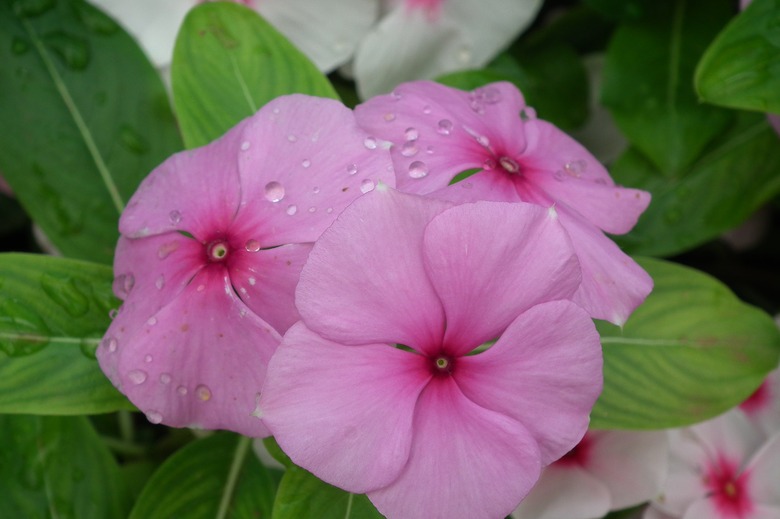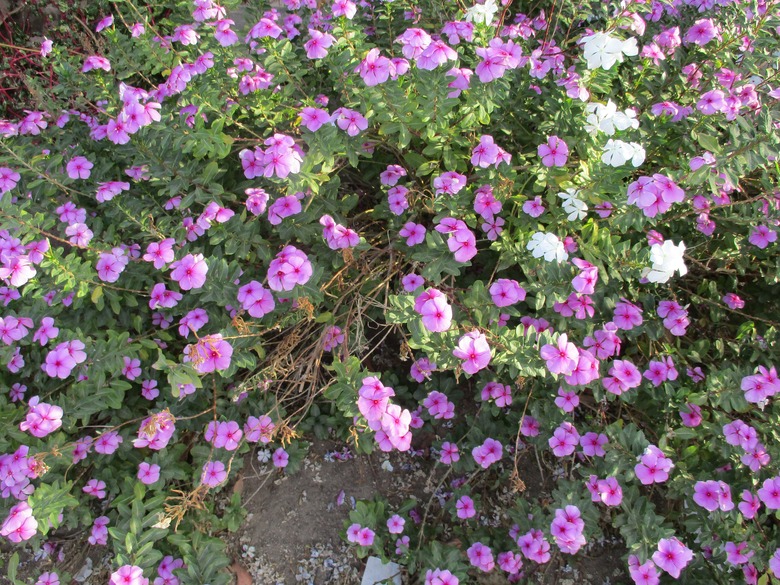How To Water Annual Vinca Flowers
Madagascar Periwinkle: Improper Watering Can Lead to Various Diseases
Annual vinca (Catharanthus roseus), which is also known as Madagascar periwinkle, is a common, easy-to-grow annual bedding plant that is winter hardy in USDA zones 10 to 11.
Like all plants, vincas need some level of moisture to thrive; however, too much water can be detrimental to this species. In fact, annual vincas are so sensitive to water that they are considered short-lived annuals because they often succumb to a number of diseases caused by excess moisture.
Types of Vinca
Species vinca plants are not common in cultivation, according to the Missouri Botanical Garden. However, there are many cultivars on the market in various shades of pink as well as red, white and lilac.
There are standard-size and dwarf options available. Vincas can be grown in containers, and there are trailing vincas for hanging baskets.
Annual vincas are distinct from perennial vincas (Vinca spp.), also known as periwinkle, which are ground cover plants that spread quickly and therefore have a tendency to become invasive.
Watering Annual Vinca Flowers
Annual vinca plants do not need a lot of water. **They should ideally receive about an inch of water a week from rainfall.**
During dry spells, you'll want to water deeply once or twice a week. Vinca plants are drought tolerant once established, so you want to be careful not to overwater them.
Good drainage is also essential for vinca plants. To promote good drainage, it is a good idea to amend soil with organic matter prior to planting vincas. This is especially important in heavy clay soils.
Tip
Vinca plants should ideally get about 1 inch of water a week from rainfall, but you'll want to water deeply once or twice a week during dry spells. Just make sure your soil drains well and is amended with organic matter prior to planting.
Avoiding Vinca Diseases
Thoughtful watering and monitoring of weather conditions is key to preventing and addressing diseases that can prematurely kill annual vinca plants.
Stem and Root Rot
Vinca plants are very susceptible to stem and root rot caused by the pathogen Phytophthora nicotianae. This disease is typically caused by excessive irrigation. Root rot can also occur during periods of intense rainfall.
Symptoms of root rot in vinca plants include chlorosis, or the yellowing of leaves. Plants become stunted before they wilt and die. Stem rot manifests as dark lesions, with die back occurring above the affected area.
Vinca plants suffering from stem and root rot should be destroyed. In this case, you can also apply fungicides to remaining plants to prevent the disease from spreading.
Leaf Spots
When watering vincas, you want to focus water on the roots and avoid overhead watering. This is because moisture on the foliage can lead to fungal leaf spots that can diminish the appearance of the plant. As the spots grow and proliferate, leaves turn yellow and drop.
The Clemson Cooperative Extension also recommends watering vinca plants before dawn to give the leaves ample time to dry during the day. Spraying vinca plants weekly with a fungicide known as chlorothalonil can also help control the fungi that cause leaf spots.
Gray Mold
Gray mold is another annual vinca disease that can be caused by overhead watering. This fungal disease can result in leaf spots, stem cankers and root rots. It is common in spring during humid weather.
The fungicide thiophanate methyl can be applied in times of excess precipitation, which is one of the conditions that encourages the development of this disease.

